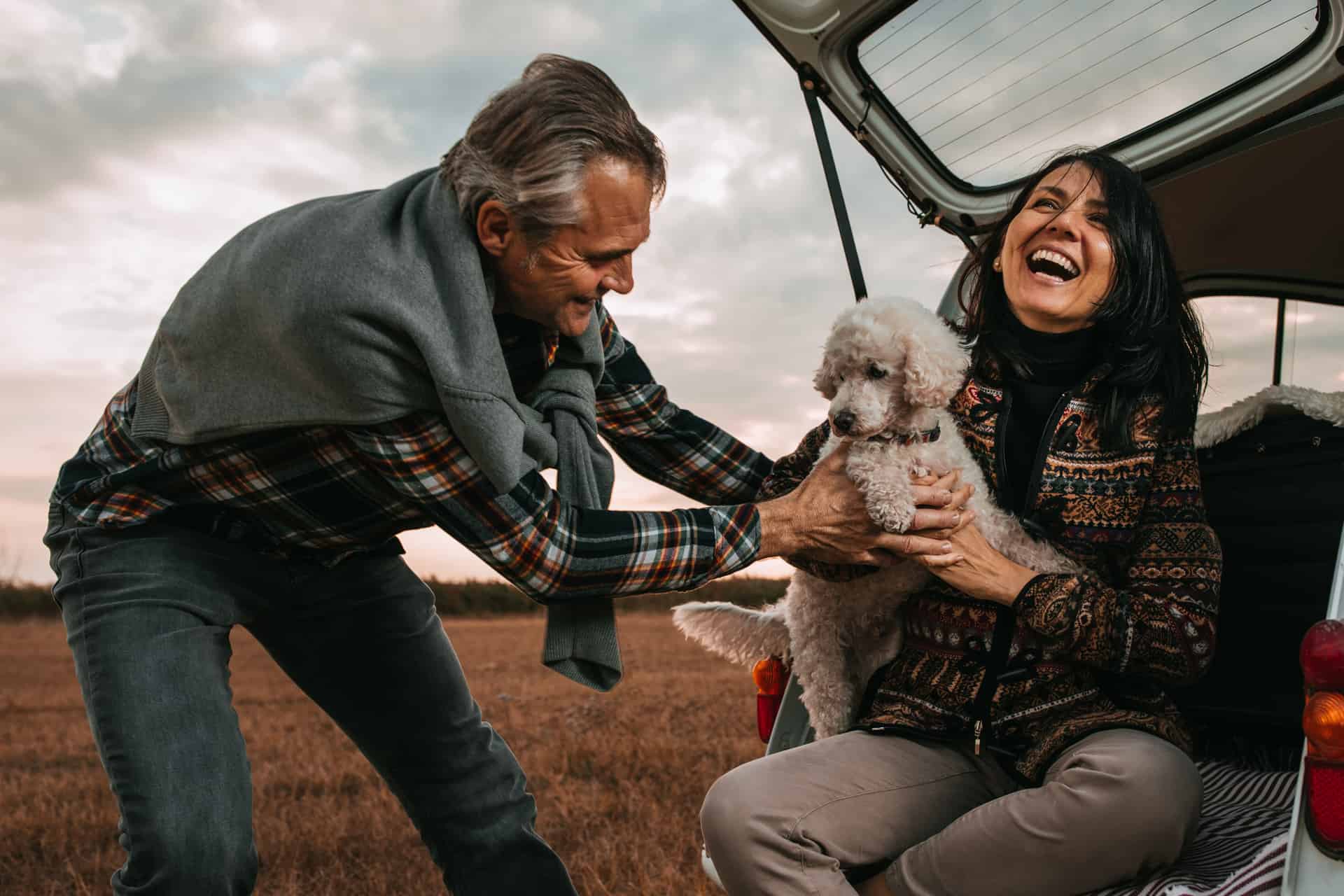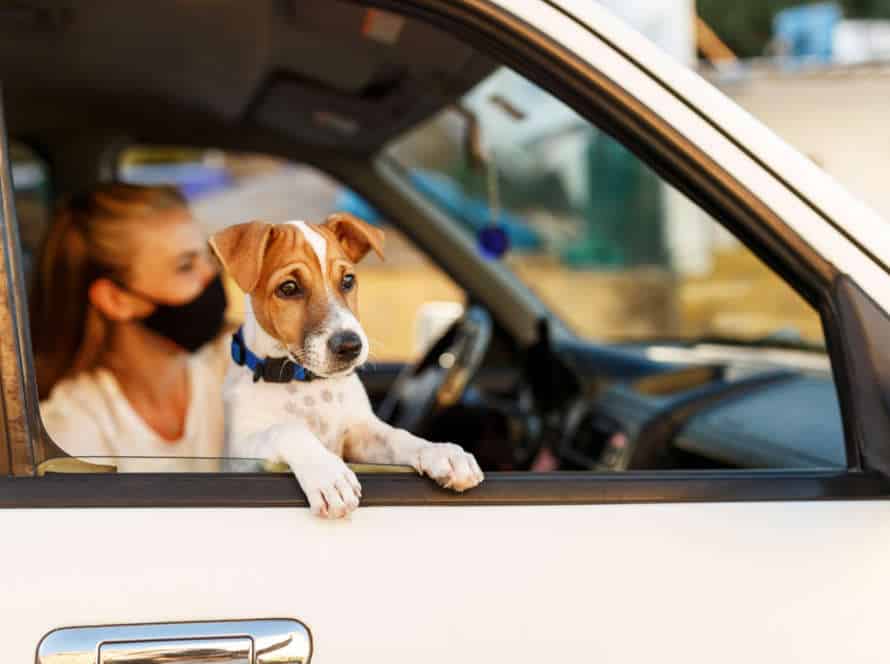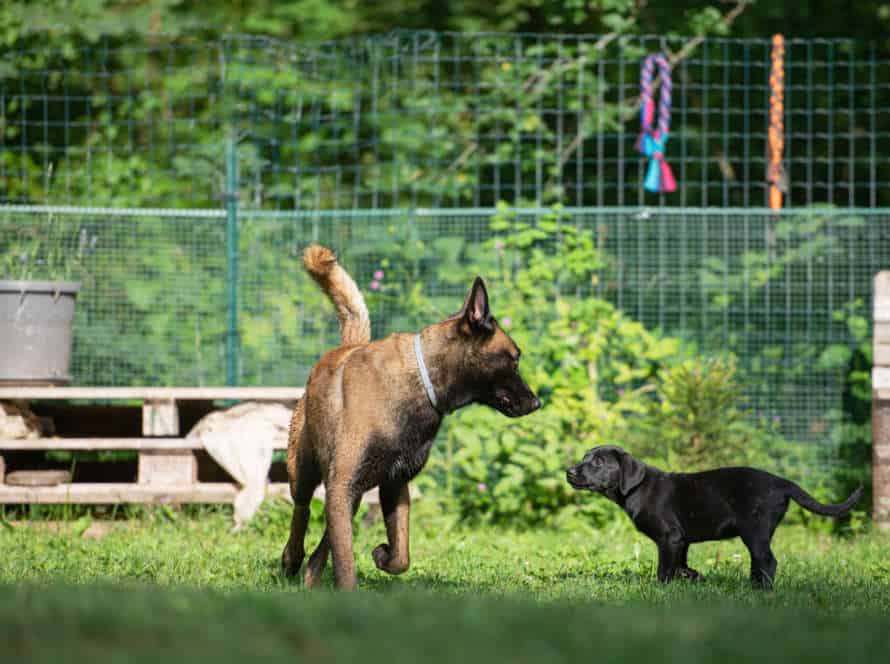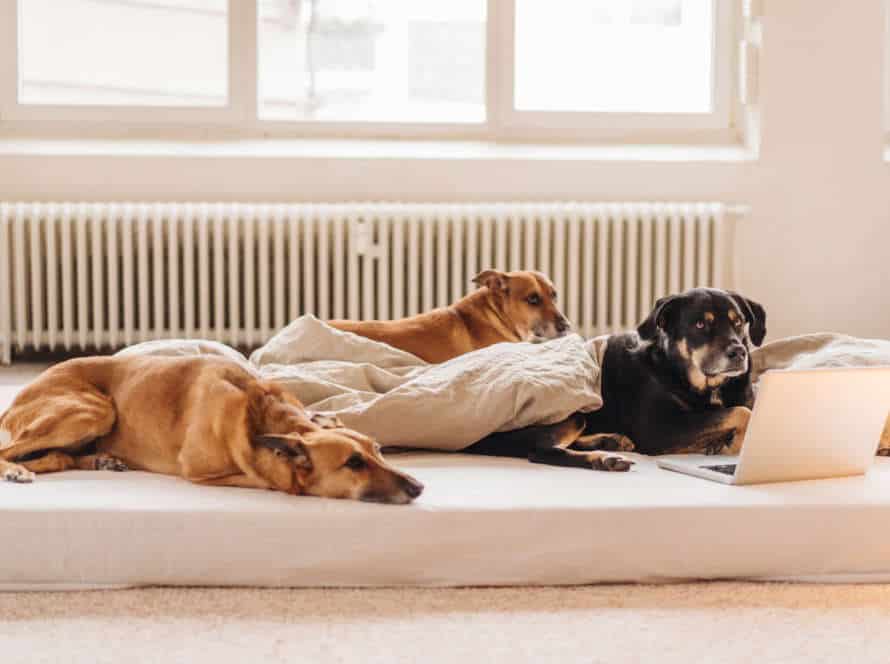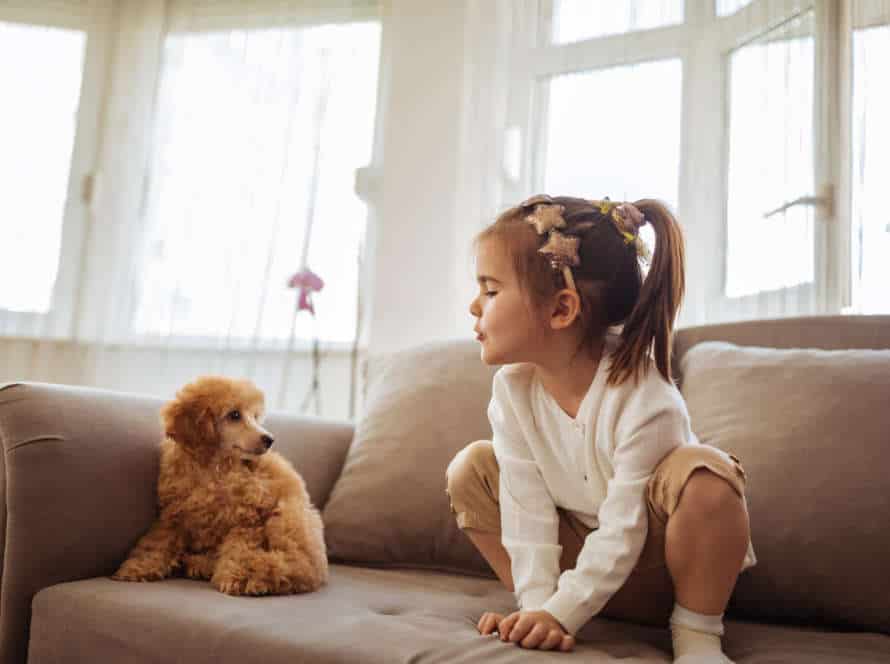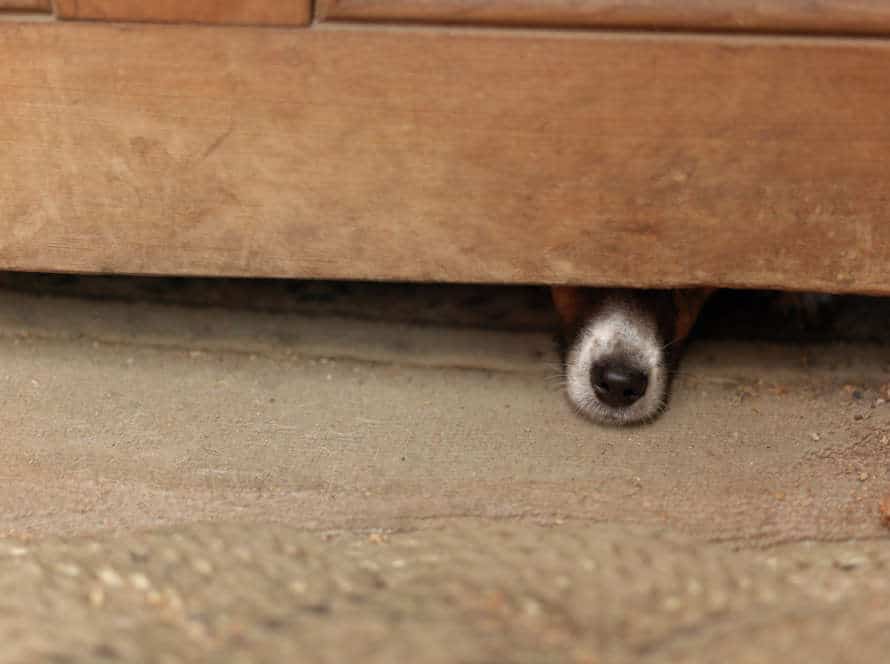From Fearful to Fearless: Transforming Your Dog’s Life
Transforming a fearful pup into a brave one can be a long journey, but it can be worth it! Here are some tips to help you:
- Realize fear is natural: Remember, fear is natural for animals, and they cannot control it.
- Find the cause of fear: Figure out why your dog is scared, so you can tackle the problem.
- Use positive reinforcement: Give treats and praise your pup to help them overcome their fear.
- Gradually introduce the trigger: Slowly introduce your pup to the thing that scares them, at a pace they’re comfortable with.
- Reward good behaviour: Whenever your pup shows good behaviour around the things that frighten them, reward them.
Always remember: Patience and determination are the keys to transforming a fearful pup into a confident and happy one.
Understanding Dog Behavior
Gaining knowledge of canine behavior can be beneficial in aiding your pup to grow more secure and content. It starts with realizing the emotions dogs can show and comprehending them in varied circumstances. Familiarizing yourself with dog behavior can assist you in understanding how to better regulate your pooch’s feelings and cultivate a better connection between the two of you.
Normal vs. Abnormal Behavior in Dogs
As a dog owner, it’s key to know the difference between ‘normal’ and ‘abnormal’ behavior in dogs. Normal behavior includes wagging their tail, barking, growling, licking, and chewing.
Abnormal behavior may signal an issue. For example:
- Aggression towards humans or other animals, biting, snarling.
- Excessive barking or whining.
- Sudden changes in appetite, water intake, or bathroom habits.
- Extreme restlessness or lethargy.
- Scratching, biting, or licking a certain area of their body.
- Fear or avoidance of certain people or situations.
- Separation anxiety or depression.
If you spot any of these symptoms, talk to your vet or an animal behaviorist to diagnose and treat the issue.
Identifying Fear and Anxiety in Your Dog
It is essential to identify fear and anxiety in your canine companion. Signs of these emotions include:
- Loud barking or growling
- Cowering, hiding or shaking
- Aggressiveness with people or other animals
- Panting, drooling or licking too much
- Destructive behavior
- Refusal to eat
Assisting your dog with conquering fear and anxiety is key. Discover the causes of the stress and create a safe and positive environment. Utilize reward-based training and stick to a steady routine for your pooch to develop assurance and feel more at ease. Always be understanding and compassionate with your pup and seek professional help if required.
Pro tip: Regular vet visits can reveal any medical issues that might be contributing to your dog’s fear and anxiety.
Understanding Aggression in Dogs
Aggression in dogs can be expressed in many ways. It’s important to comprehend what causes aggressive behavior in your pet, to stop any bad events. Here are the most usual forms of dog aggression:
- Territorial aggression: When your dog senses a danger to their space or region. This can take the form of barking, growling, and even biting.
- Fear aggression: When a dog is scared of something or someone, and reacts aggressively to protect themselves. This may be due to alien environments or people.
- Dominance aggression: Rarely seen. It’s when your dog displays aggression to demonstrate their power over you or other dogs.
- Protective aggression: When your pup becomes too protective of you or their puppies or feels threatened by strangers.
It’s significant to understand your pooch’s triggers and to work with a professional dog coach to modify their attitude. Note that aggression in dogs is often a sign of underlying problems that require special care.
Pro Tip: Socialization is critical in decreasing dog aggression. Make certain your pup is properly socialized from a young age, to prevent fear, anxiety, and aggression.
Causes of Fear and Anxiety in Dogs
Fear and anxiety can be detrimental to a dog’s life. It is essential to comprehend the source of this fear. Genetics, past experiences, and environment may all be contributors to fear and anxiety in dogs. In this piece, we will examine the diverse sources of fear and anxiety in dogs and how we can help them overcome it.
Genetics and Past Experience
Genetics and past experiences can both result in fear and anxiety in dogs, which can then impact their behavior and quality of life.
Genetics has a large impact on a dog’s temperament and personality. Certain breeds are more likely to be anxious or worried due to their genetics. For example, herding breeds like Border Collies and Australian Shepherds are usually very anxious as they have an instinct to control their environment.
Past experiences can also have a lasting effect on a dog’s behavior. Things like abuse or neglect can leave a long-lasting impression on a dog’s mind and cause fear and anxiety. For instance, if a dog gets attacked by another, it may become scared of other dogs or people.
Recognizing the role of genetics and past experiences in fear and anxiety can help dog owners tackle these issues and boost their pet’s quality of life. Pro tip: Consulting with a professional dog trainer or behaviorist can offer useful methods to help your dog overcome their fears and anxieties.
Lack of Socialization and Training
Fear and anxiety can be caused by a lack of socialization and training for dogs. They are social creatures and need to have contact with other animals and people to understand how to act and be confident. Here are a few solutions:
- Socialization: Introduce your pup to new people, places and pets while they are still young. Increase the amount of situations gradually. This will reduce the fear and anxiety.
- Obedience Training: Take your dog to an obedience class to learn basic commands and good behavior. This will give them discipline and more confidence.
- Counter-Conditioning: If your pup is already fearful and anxious, do counter-conditioning. Link positive experiences such as treats and compliments with feared things like thunderstorms, car rides or vet visits.
- Professional Help: If your dog’s fear and anxiety continues, get help from a professional dog trainer or a vet. They can create a personalized training plan to help your pup become fearless.
Remember: Consistency and patience are important for successful socialization and training. Don’t rush and always use positive reinforcement to encourage good behavior.
Medical Conditions that Affect Behavior
Medical issues that affect the behavior of dogs can bring about fear and anxiety. This can cause behavioral changes and lower the quality of life. Here are a few examples:
- Hypothyroidism: The thyroid gland doesn’t generate enough hormones. This leads to lethargy, weight gain and fearfulness.
- Chronic Pain: Dogs in pain may become aggressive, more irritable or scared.
- Cognitive Dysfunction: It is like Alzheimer’s in humans. It can cause disorientation, less activity and more anxiety in dogs.
- Seizures: They can cause fear and anxiety before, during and after.
- Ear Infections: They can cause pain and discomfort. This can lead to irritability and fear.
If you think your dog has changed behavior, it’s important to visit your vet. They can help figure out any health issues causing it.
Pro Tip: Regular vet visits and early detection of medical conditions can improve your dog’s quality of life and behavior.
Techniques for Managing Fear and Anxiety in Dogs
Dogs may become afraid for many reasons. Stress, loud noises, and changes in their environment can all be triggers. This can make it tough for them to live life normally.
Fortunately, there are ways to help manage their fear and anxiety. In this article, we’ll look at these techniques and how they can help dogs.
Desensitization and Counterconditioning
Desensitization and Counterconditioning can help manage fear and anxiety in dogs. This changes their lives from fearful to fearless.
Desensitization means exposing your pup to the thing that scares them, but in low intensity first. This teaches them it’s not bad.
Counterconditioning means pairing the trigger with something positive. Treats or playtime for example. This helps your pup link the trigger to something good and not be scared.
Using both these techniques together helps reduce fear and anxiety and transform your pet’s life.
Remember to talk to a professional trainer or behaviorist to do it right and safely. Patience and consistency is key, since progress might not be quick. But it pays off in the long run.
Positive Reinforcement Training
Positive reinforcement training is a great way to help dogs manage fear and anxiety. Instead of using punishment, reward good behavior with treats, praise, or toys.
Here are some tips to get started:
- Teach basic commands like ‘sit,’ ‘stay,’ and ‘come.’
- Reward good behavior with treats, praise, or toys.
- Be consistent and use positive reinforcement for all commands.
- Avoid physical punishment and negative reinforcement, as it can make dogs more anxious and fearful.
- Practice and patience can help your pup become more confident, and overcome their fears and anxieties.
Medications and Supplements to Help Calm Your Dog
Dealing with an anxious pup? Meds and supplements can be useful in calming them down. Here are some options:
- Prescription medications from your vet.
- OTC supplements, such as calming chews.
- CBD products, like oil or treats.
But, talk to the vet about dosage + frequency! Lastly, try training and behaviour mod. You can help your pup feel more at ease and transform their life from fearful to fearless!
Tips for Building Confidence in Your Dog
Dogs, just like us humans, can have confidence problems. This can lead to fear and unease. To have a great relationship with your pup, you must build their trust and confidence. Here are some tips to help!
- One way is to give them positive reinforcement. If your dog does something good, be sure to reward them with lots of love and treats.
- Another tip is to play fun games with your pup. This can help them become more playful and trusting.
- A third strategy is to use calming scents. Lavender, chamomile, and vanilla are all known for their soothing effects.
- Finally, be sure to spend quality time with your pup. They need your love and attention to build their confidence.
Regular Exercise and Playtime
Exercise and playtime are a must for dogs to gain confidence and move from fearful to fearless. To help your pup build confidence, here are some tips:
- Exercise: Let your dog release energy and increase strength and endurance with regular exercise. Offer chances to exercise throughout the day, like jogging, walking or fetch.
- Playtime: Have interactive playtime to build trust and bond. Games like tug-of-war, hide and seek or fetch are great for problem-solving and mental stimulation.
Not only does activity help physical strength, but also mental and emotional health.
Pro tip: Check with your vet first if you have an older dog.
Consistent Training and Positive Reinforcement
Consistent training and positive reinforcement are key for transforming your dog’s life from scared to secure. Dogs need consistency and clear instructions, and positive reinforcement is a powerful way to encourage the right doings and foster trust and a stronger connection between you and your dog.
To help your pup build confidence, here are some tips:
- Set achievable goals for your pup and work on them regularly.
- Reward good behavior with treats, toys, and praise.
- Use verbal cues and body language to make your pup understand what you want.
- Don’t punish and instead use redirection and positive training methods to correct wrong behavior.
These tips will help your pup feel confident and have a happy and fulfilling life.
Exposure to New Environments and Situations
It’s vital to introduce your pup to new places and situations for them to gain confidence. But, it must be done cautiously to avoid overwhelming them. Here are a few tips to assist your pup with conquering their fears and becoming more sure of themselves:
- Start with calming drills at home, e.g. obedience commands and tricks.
- Introduce your pup to new noises, smells and settings, like a park or a crowded street, in short and controlled sessions.
- Make use of positive reinforcement techniques like treats and praise to reward your pup for their improvement and well-behaved behavior.
- Think about signing up your dog for a socialization or training class.
- Always be patient and understanding of your pup’s worries and progress as augmenting confidence requires time and effort.
Dealing with Aggression in Dogs
Dogs often show aggression for many reasons. It could be fear, frustration, pain, or something else. This can be challenging and even risky to manage. To create a safe and loving home, it is vital to comprehend why your pup is aggressive and how to tackle it. Let’s find out how to properly reduce and manage aggression in your pup.
Recognizing Different Types of Aggressive Behavior
Dogs may show aggression differently. It’s important to recognize the warning signs to avoid any harm. Here are some forms of aggression they may display:
- Territorial Aggression: They bark, growl, and lunge if they feel a stranger is a threat to their space.
- Fear Aggression: Dogs may growl, bark or bite if they feel scared or threatened.
- Dominance Aggression: If the dog feels dominant, they may growl, bark or bite.
- Redirected Aggression: If they can’t direct aggression to the source, they may redirect it to someone or something else.
Safety is key when handling an aggressive dog. Seek help from a professional like a dog trainer or behaviorist to help your pup. Show your furry friend love and support for a fearless, confident life!
Working with a Professional Trainer or Behaviorist
Aggression in dogs can be hard for both owners and their pets. A professional, such as a trainer or behaviorist, can help. They can discover the reason for the aggression and come up with a plan. It’s essential to look into the credentials, experience, and methods of the professional before selecting them.
Be sure to tell the professional your goals and worries. Patience, commitment, and the right support can help your pup overcome aggression and live happily.
Safety Tips for Managing Aggressive Behavior in Dogs
Managing aggression in dogs can be tough and risky. Here are some safety tips to help you control your dog’s aggression, and keep away from harm:
- Don’t use physical punishment or negative reinforcement, as it can make the aggression worse.
- Look out for body language and vocal cues, which might be signs of aggression.
- Train your dog to do basic commands, like ‘sit’, ‘stay’ and ‘come’. This will aid you in potentially dangerous situations.
- Socialize your dog early on, and let them experience different people and situations. This will reduce their anxiety.
- Make sure your dog gets enough exercise and stimulation. This can stop frustration or boredom from leading to aggression.
- Consult a professional trainer or behaviorist for help and advice.
Using these tips, you can lessen the chance of getting hurt, and create a safe environment for both you and your dog.
Frequently Asked Questions
Q: How can fear impact my dog’s behavior?
A: Fear can cause your dog to become timid or aggressive, exhibit destructive behavior, or have trouble learning new things. It can also lead to separation anxiety and other behavioral problems.
Q: What are some signs my dog is fearful?
A: Signs of fear in dogs can include trembling, panting, hiding or cowering, excessive barking or growling, and avoiding eye contact. Your dog may also have trouble learning new things, be hesitant to approach people or other dogs, or have accidents in the house.
Q: What steps can I take to help my fearful dog?
A: It is important to create a safe and comfortable environment for your dog, and to gradually expose them to new situations and experiences. Consistent training and positive reinforcement can also help build your dog’s confidence.
Q: Should I use punishment to correct my dog’s fearful behavior?
A: No, punishment can actually make your dog’s fear worse and damage the trust between you and your pet. Positive reinforcement and patience are always the best approach.
Q: Can a professional dog trainer help my fearful dog?
A: Yes, a qualified dog trainer can assess your pet’s behavior and create a personalized training plan to help them overcome their fears. They can also provide guidance to help you support your dog’s progress at home.
Q: How long does it take for a dog to overcome their fears?
A: Every dog is different, and the timeline for overcoming fear can vary depending on the severity of the issue and the dog’s individual personality. With patience, consistent training, and positive reinforcement, however, most dogs can make significant progress in a matter of weeks or months.

